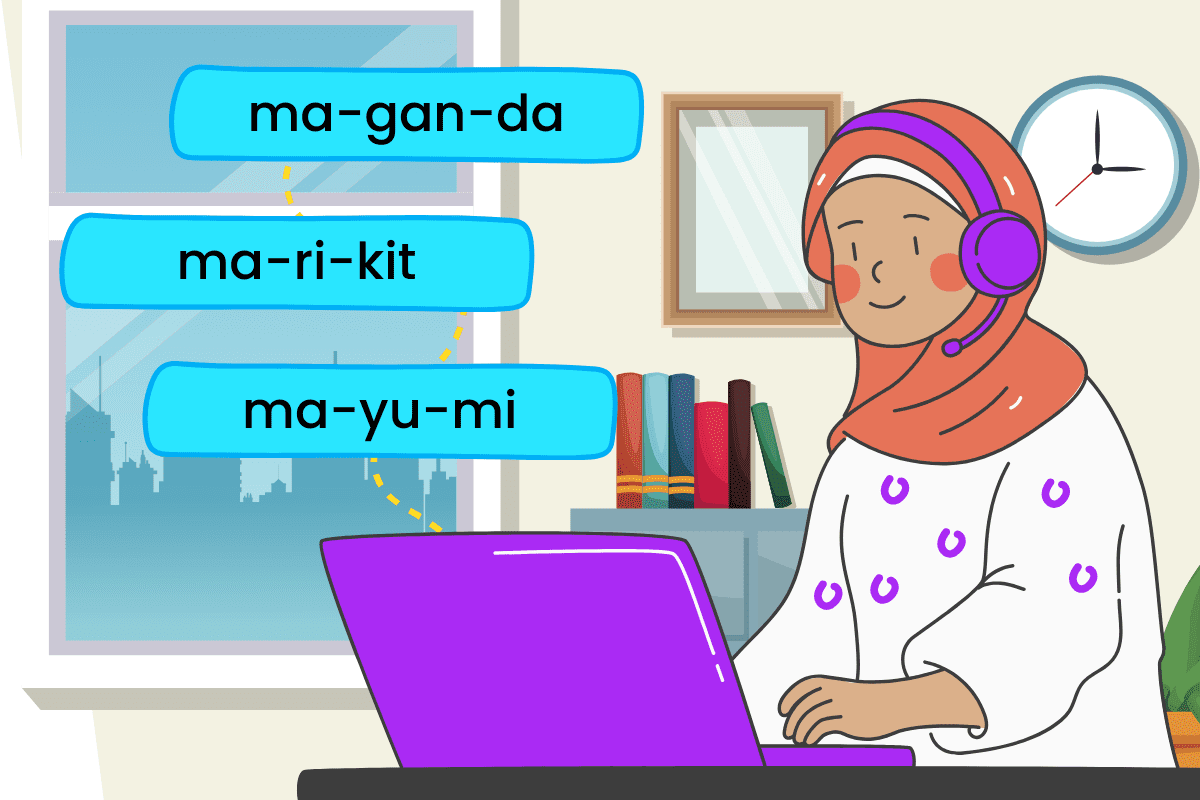Learning a language is difficult in general. While learning Tagalog is made easier due to its use of Roman letters, it doesn’t mean learning it will be a piece of cake. Along the way, you may hit a snag, affecting your motivation to learn. But not to worry, we’re here to discuss how to stay motivated while learning Tagalog.
These moments of indecision and distress are normal on the journey to learning. This is especially true for adults, who have several responsibilities that take up most of their time and effort. Besides these external factors, there’s also the internal factor of diminishing brain plasticity—the ability to adapt and rewire itself.
Thus, here’s a simple guide to staying motivated while learning Tagalog.

1. List Down the Reasons Why You’re Learning Tagalog
On the journey to learning a new language, you might get so wrapped up in difficulties that you lose sight of why you want to learn in the first place.
One of the simplest things you can do to fix this is to simply jot down your reasons for learning in a journal. Elaborate on those reasons and talk about the progress you have made, no matter how small they may be.
Here are some of the reasons for learning Tagalog:
a. Connection To The Culture
- This rings especially true for immigrants and their progeny or descendants. While their parents or other relatives may have taught them Tagalog, the lack of immersion and usage limits their ability to speak the language.
b. Travel
- If you want to travel to the Philippines, learning Tagalog will come in handy. It will allow you to communicate with the locals and understand signs and instructions you might encounter along the way.
c. Career
- Money can be a great motivator, no matter what language it is. If you’re working at a company with a large Filipino population or looking to expand your business to the Philippines, learning Tagalog is necessary.
d. Addition to Language Repertoire
- While it may not sound like a strong motivator to some, some people are just determined to become super polyglots. The allure of mastering multiple languages lies in the boundless opportunities it presents for personal growth, intellectual stimulation, and cross-cultural connection.

2. Set Easy Short-Term Goals
There’s no shortcut to learning a language. If you go big all at once and try to speedrun the whole process, you might not absorb what you’re learning and even get burnt out. These will definitely contribute to fizzling out your determination.
The best thing you can do is divide your long-term goal into smaller chunks. Then further divide those small chunks into even smaller chunks. This provides clear, actionable steps for progress at every stage.
This approach to goal decomposition not only facilitates clarity and focus but also instills a sense of momentum and progress. Each task completed, no matter how small, brings you one step closer to realizing your long-term goal, reinforcing your sense of achievement and motivation along the way.
Here’s one way you can break down your Tagalog learning goal:
- Introducing Yourself
- Sentence Subject
- Formal Sentence Structure
- Informal Sentence Structure
- Use of “You”
- Use of “No”
- Asking Questions
- Describing Others
- Root words
- Pronouns
- Use of “Us”
- Adjectives as Nouns
- Use of “We”
- Use of “They/Them”
- Ligatures

3. Set A Learning Schedule
Once you’ve broken down your long-term Tagalog learning goal into smaller, more digestible chunks, the next step is to establish a consistent and sustainable learning routine. While it’s tempting to envision marathon study sessions spanning several hours, the key lies not in the quantity of time but rather in the quality and consistency of your efforts.
Begin by assessing your schedule and identifying pockets of time that can be allocated to language learning without overwhelming your existing commitments. Whether it’s early mornings before your daily morning routine, lunch breaks, or idle evenings, aim to carve out dedicated study periods that fit seamlessly into your routine.
It doesn’t have to be three hours or more. Even short, focused bursts of learning can yield significant progress over time. Aim for a duration that balances manageable and productive, allowing you to effectively absorb and retain the material without succumbing to burnout or fatigue.

4. Immerse Yourself In Local Culture And Media
Incorporate various learning activities into your schedule to keep things engaging and dynamic. Mix and match different approaches, such as reading, listening to podcasts or music, watching videos, engaging in conversation practice, and completing interactive exercises.
Learning just by the book is possible but may restrict you to more formal Tagalog. Watching Tagalog media, such as movies, can also help you, especially regarding informal and conversational Tagalog. Media is also a good way for you to pick up pop culture, idioms, and slang to spice up your sentences.

5. Communicate With Native Speakers
Most of the time, it can be hard to see your progress, especially when you’re learning by yourself. Without tangible markers or feedback, it’s easy to lose sight of how far you’ve come.
Test yourself and maybe even expand your vocabulary by communicating with native Tagalog speakers. Engaging in conversations with native speakers not only exposes you to authentic language usage but also provides invaluable opportunities to practice speaking and listening in real-world contexts.
Thanks to technology, you don’t even have to travel to achieve this. You can simply visit forums or groups that cater to Filipino audiences and start up a chat.

6. Reward Yourself
No matter how small it may be, progress is still progress. Celebrate these accomplishments.
Each new word learned, every grammatical concept grasped, and every successful conversation held represents a triumph worth commemorating. By recognizing and appreciating these small victories along the way, you will boost your morale and motivation, reinforce positive learning habits, and cultivate a sense of accomplishment.
As previously mentioned, learning a language is a difficult process. There’s no need to add unnecessary pressure or judgment to the process. Be kind to yourself, acknowledge the effort you’re putting in, and celebrate the journey as much as the destination.
Trusting The Process
Learning Tagalog can be an uphill battle. It’s so easy to get caught up in the difficulty that it can severely dim your motivation.
However, it’s important to recognize that facing challenges and experiencing setbacks are an inevitable part of the language learning journey. View these obstacles as opportunities for growth and learning. Each stumble is not a sign of failure but rather a stepping stone on the path to mastery.
Moreover, remember that motivation is not a finite resource but a renewable wellspring that can be replenished through various means. Seek out sources of inspiration and encouragement, whether it’s immersing yourself in Tagalog media, connecting with fellow learners for mutual support, or setting small, achievable goals to celebrate your progress along the way.
If you need a partner in your Tagalog learning journey to help you stay motivated along the way, why not try a Tagalog learning app like Turong Wika?
Turong Wika is an interactive app that breaks down the Tagalog learning process into bite-sized chunks you can easily absorb and accomplish. From introducing yourself to geographical vocabulary, it has everything you need to speak and write like a local.
Besides the lessons, Turong Wika also has a Practice feature that allows you to test your Tagalog knowledge. It allows you to choose how many items you want to answer, from five to 25.
Don’t dally. Download the app and start learning now. Contact us!






